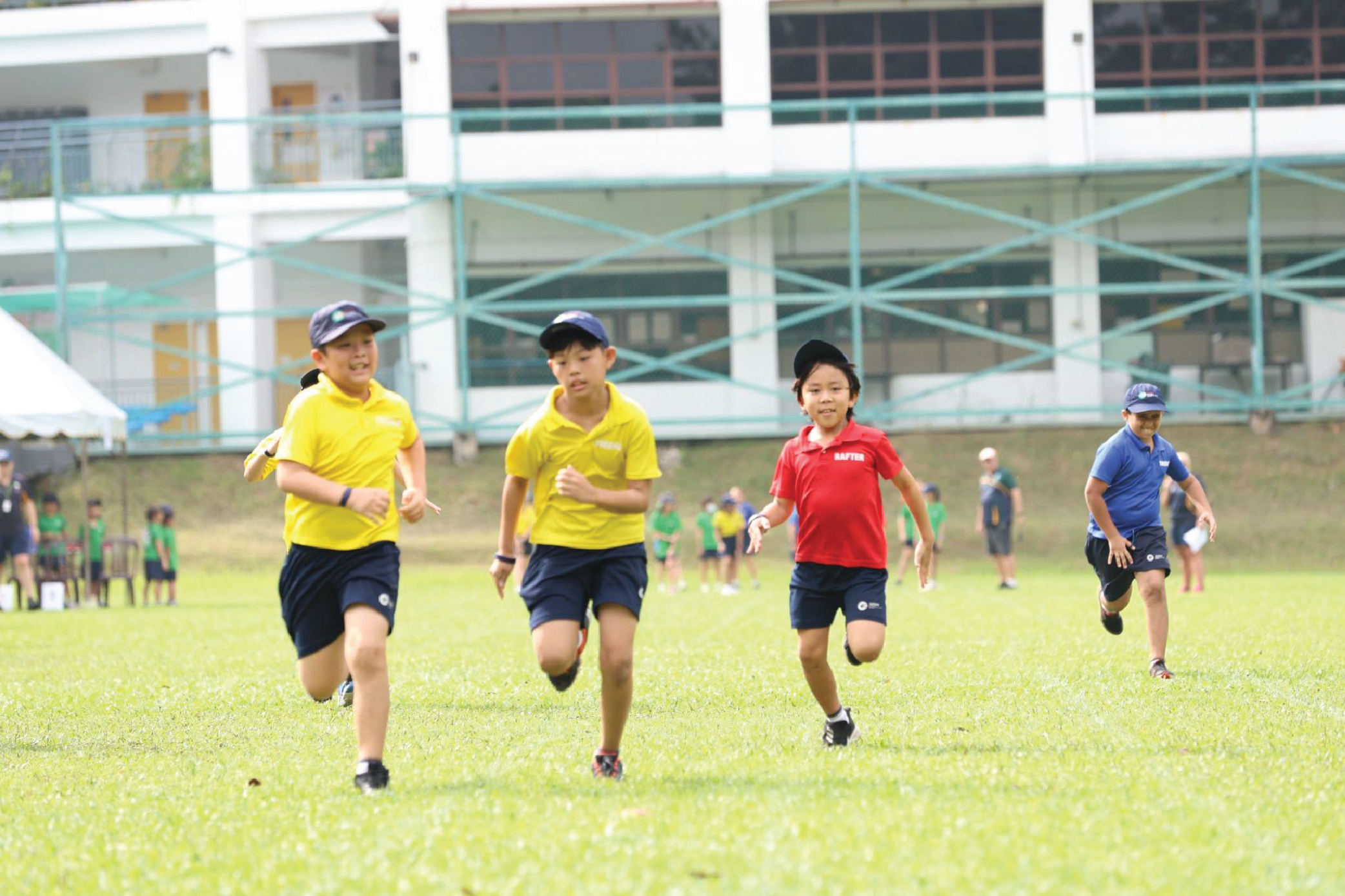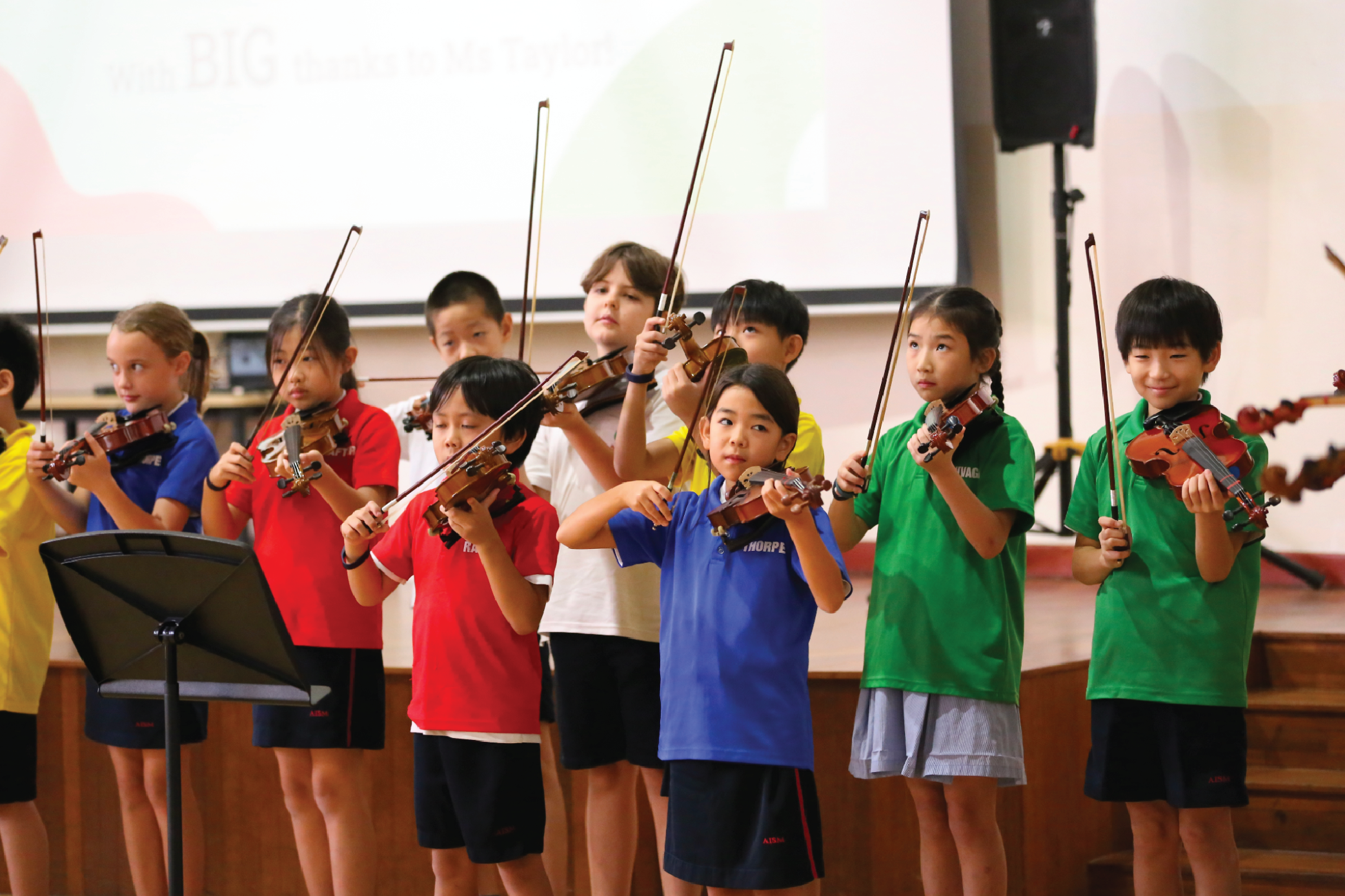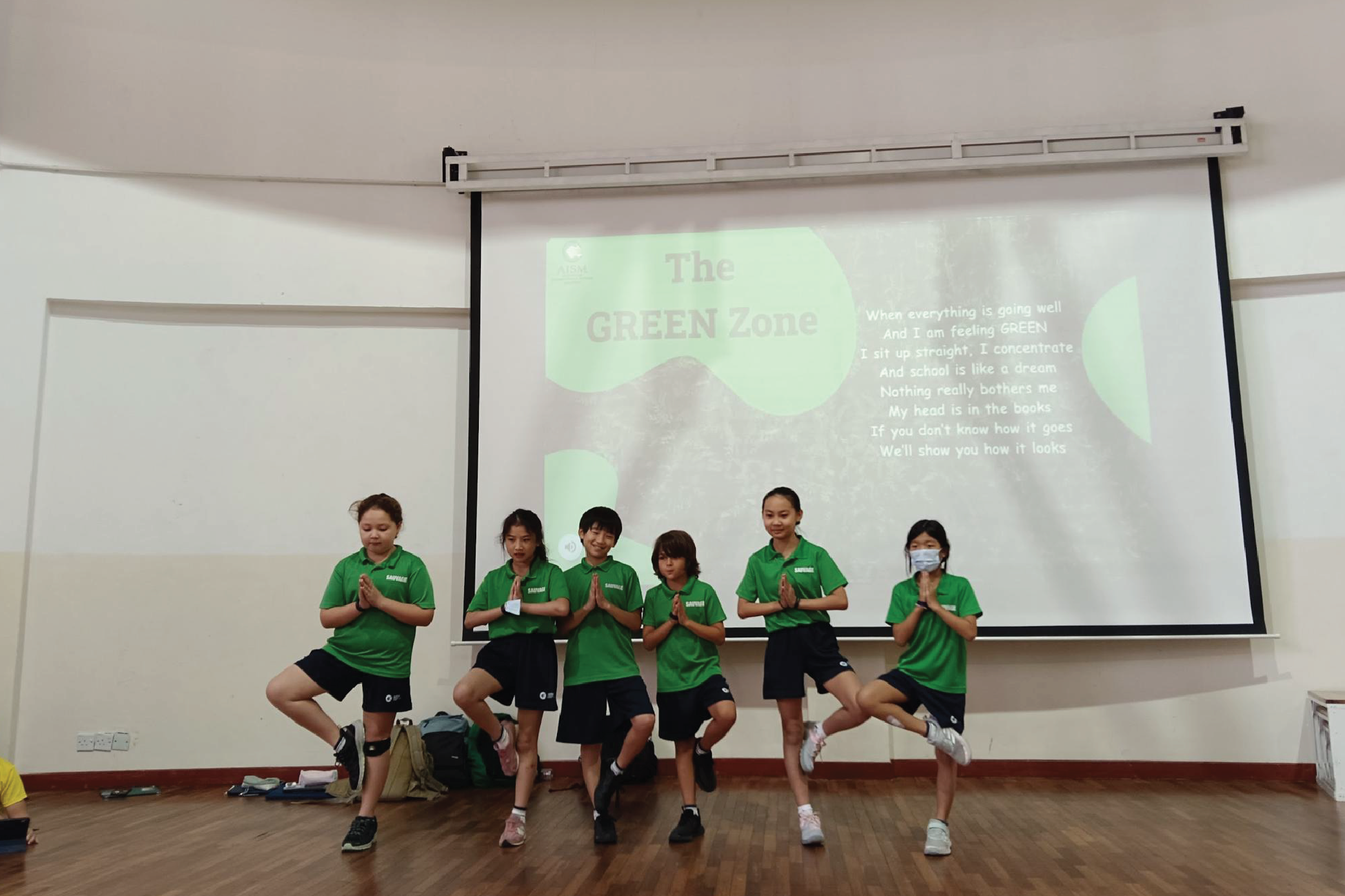PRINCIPALLY SPEAKING
Simon Brooks, Principal
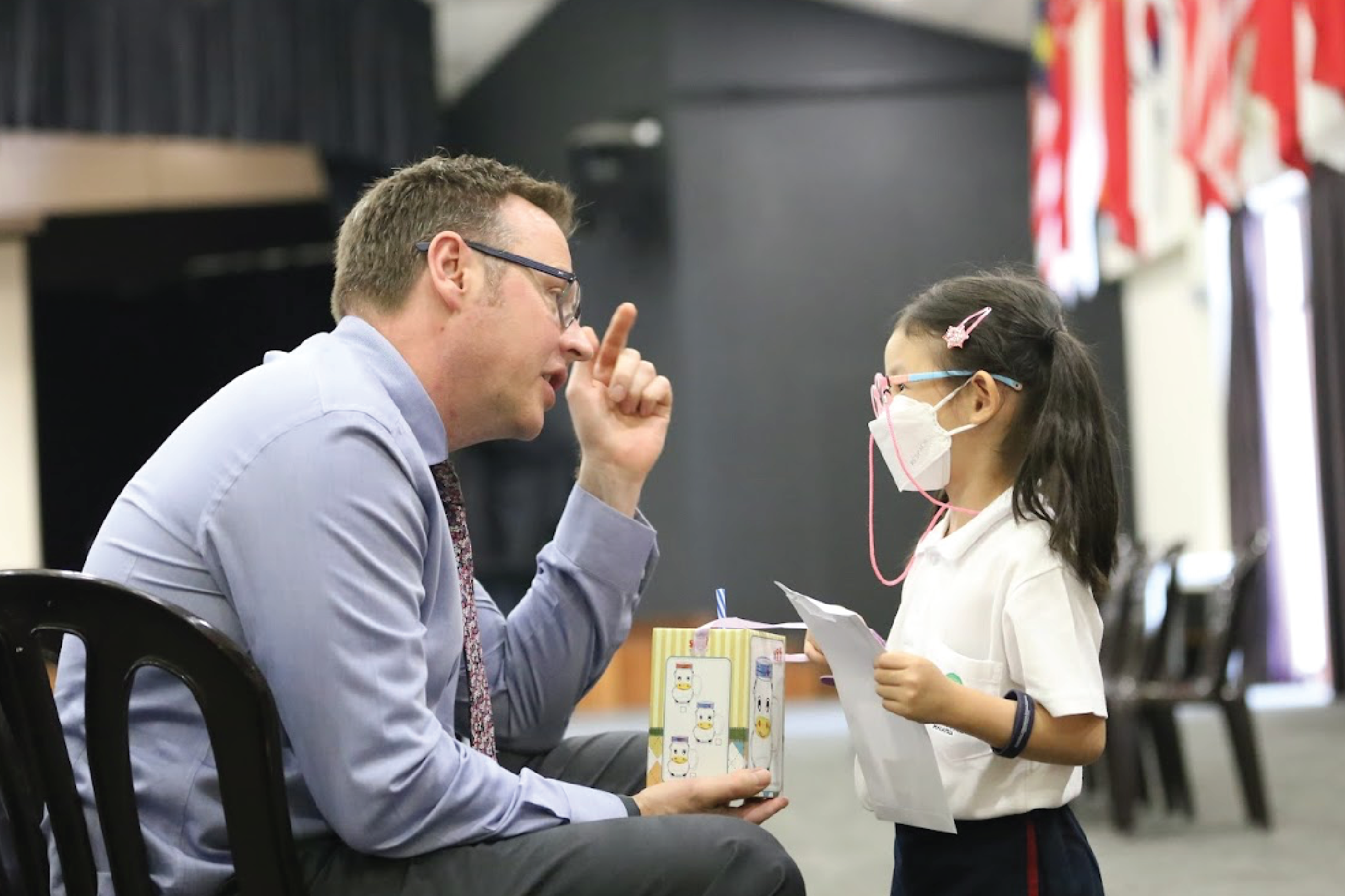
What Makes You Say That? - The Magic Question
One of our core mindsets at AISM is our belief that ‘Learning is a Consequence of Thinking’.
Let’s unpack that for a moment. Learning is a consequence of thinking. Learning is not a consequence of sitting silently and listening!
That said, sometimes sitting silently and listening can be a good starting point. If we’re going to be thinking, we need something to think about, so if sitting silently and listening means that we are exposed to some interesting knowledge and information, this is a good beginning.
But it is only when we do something cognitively with that information that we truly begin to develop our understanding. It is only when we ask interesting questions, or share an opinion, or justify our thinking, or make connections, or explain an idea to someone else, or capture the essence of a concept, that deep learning can take place. Learning happens when we are motivated to think in a variety of different ways about the content we explore. Learning happens when we are in a context where we choose to switch our ‘Minds On’!
As teachers, parents, friends or family members, there is one particularly powerful ‘magic question’ we can practise asking over and over again if we are keen to support our children in becoming powerful learners.
“What makes you say that?”
This question is best asked as a follow-up to any statement, assertion or opinion expressed by someone else.
Seemingly simple on the surface, this question requires children and young people to make visible the thinking that underpins their perspective or point of view. It places them in the role of ‘justifier’, holding them to account for their thinking, and encouraging them to talk more about the rationale behind their thoughts.
As parents, if our child says , “I really like this book”, we might ask them, “What makes you say that?”
If they come home from school and say, “Learning about space is so cool!”, we might reply with, “What makes you say that?”
If they say, “Today we learnt something really interesting about trigonometry”, then it’s another occasion for “What makes you say that?”
If they ask, “Why is the sky blue?”, you might ask, “What makes you ask that?”
If they say, “I’m feeling sad today?”, it could be another good time to ask, “What makes you say that?”
As educators, we call WMYST? the ‘magic question’ because it is always amazing to see how much of our students’ thinking it reveals that previously lay hidden. We find that by asking the question regularly in class with our students, we are able to build a rich culture of thinking, where students are delighted to share their theories, ideas and explanations, and feel valued as thinkers and learners.
Tone is important when it comes to asking WMYST?
If we use a dismissive tone, emphasising the final word - “What makes you say that?” - we can easily make our children feel belittled and crushed for sharing their thoughts!
But if we ask the question with just the right sense of genuine interest, it is one of the best ways to make our children feel valued. It sends a message that we are genuinely interested in their thinking and genuinely interested to learn more about it. In a world where sometimes it feels like people talk over us most of the time and are more interested to jump in with what they think than listen to us, it sends the exact opposite message.
“I value you and what you have to offer,” it tells people. “I really want to know what you think about this!”
When we first start asking the question a lot, it can take children a little time to adjust. If they come from a culture where it’s less about thinking and more about ‘memorise and recall’, they might feel that WMYST? is just another way of checking whether they’ve got it right. They won’t feel encouraged to speak up and share their thoughts or opinions if this is the prevailing culture.
The spirit behind WMYST? is not to check whether they ‘have it right’. It is to surface their thinking for further discussion. It is to create a culture where thinking is celebrated, shared and collectively analysed for the benefit of everyone.
So, parents and guardians, I urge you to try out the ‘magic question’ with your children this weekend. Look for opportunities to ask it. Challenge yourselves to ask it as many times as you can.
I wonder if your children will notice, and what they will think of it… I’d love to hear about your experiences if you try!
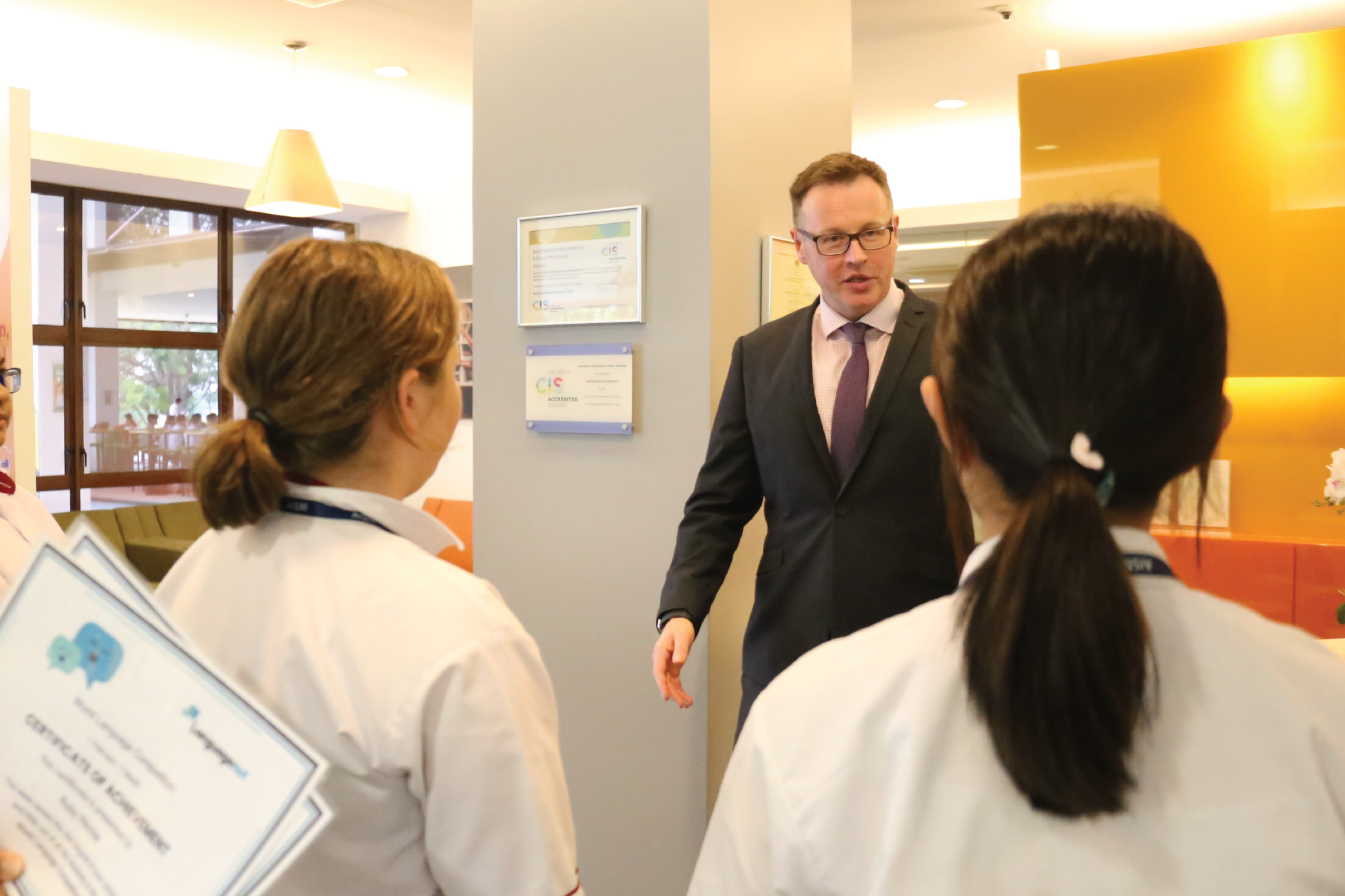
JUNIOR SCHOOL
Michelle Chaplin, Head of Junior School

The Junior School is finishing on a high as we consolidate our learning through various exciting experiences. Recently we have shared on Seesaw the details of all the upcoming events - please stay tuned to our Seesaw channel for details for each event closer to the time!
Coming next week -
Thursday, 23 November
8.30am, Library
Prep parents in readiness for 2024
Departure 9.30am - Returning at 2.30pm
Friday, 24 November
9.00am (Full school uniform)
1.30pm (Change into Graduation t-shirt)
Saturday, 25 November
As we prepare for 2024 teachers are finalising reports and preparing class lists - as previously communicated due to increasing numbers, we are excited to be moving to the following year levels with 2 classes - Year 1, Year 3 and Year 5. Teachers will not accept requests from parents regarding classes for next year - should you wish to raise any concerns or suggestions please make a time to meet with me, Michelle Chaplin (michellec@aism.edu.my)
Looking forward to a wonderful last few weeks of 2023!
Assemblies, Athletics and Aspirations
Mr Oliver and Ms Auni, Year 4 Classroom Teacher
I'm excited to share with you some of the fantastic things our Year 4 students have been up to recently. It's been a busy and rewarding term for us!
Our Assembly Performance: A Round of Applause!
Our class recently took center stage at the school assembly, and what a performance it was! Many of our students showcased their piano skills - as well as a rockin’ bass solo - filling the hall with beautiful music. And let's not forget the whole class coming together for a violin performance. Seeing all our students playing in unison was a proud moment for all of us. Great job, everyone!
Up Next: Excursion to Kidzania
I can sense the excitement building up for our upcoming trip to Kidzania. This is going to be a fantastic opportunity for our students to explore different types of jobs in a really interactive and fun way. Kidzania is all about learning through experience, and I'm sure our students will come back with lots of stories and maybe even ideas about what they want to be when they grow up!
Exciting Adventures Unleashed: Foundation Students' First Ever Excursion to Putrajaya Wetlands Studio!
Mrs Cayli Russell, Foundation Teacher

We are thrilled to share the joy and excitement that filled the air as our Foundation students embarked on their very first excursion to the Putrajaya Wetlands Studio, accompanied by their Year 1 peers. The energy was palpable as the students eagerly boarded the bus, and their enthusiasm was contagious!
For many of our little adventurers, the bus ride itself was a highlight, marked by wide-eyed wonder and gleeful squeals. It turns out, riding on a bus was an exhilarating experience for these young minds, making the journey to the Wetlands Studio all the more special.
The Putrajaya Wetlands Studio proved to be an enchanting and sensory-stimulating haven for our curious learners. They explored diverse exhibits showcasing everything from insects and dinosaurs to animals, sea creatures, and birdlife. Martin, one of our budding explorers, couldn't contain his excitement, sharing, "My favourite part of the excursion was seeing the Megalodon; it is much bigger than a shark!" The awe-inspiring exhibits brought prehistoric creatures to life, with roars and movements that added an extra layer of thrill to the experience.
The adventure didn't stop there – the students had the chance to meet Zee, the studio mascot, who joined them in a lively dance. Laughter echoed as the students twirled and danced with their newfound friend.
Following the exploration indoors, our young explorers headed outdoors for a delightful picnic on the wetland grassland. Surrounded by nature, the students reveled in the joy of the great outdoors. The picnic provided a perfect opportunity for them to reflect on the wonders they had encountered throughout the day.

In the words of our Foundation teachers, the excursion was a resounding success, fostering a love for learning through hands-on experiences. As our students continue to grow and explore, we look forward to many more exciting adventures that will shape their educational journey.
A heartfelt thank you to all the teachers, staff, and volunteers who made this memorable excursion possible. Your dedication to providing enriching experiences for our students truly makes a difference.
MIDDLE & SENIOR SCHOOL
Middle & Senior School Camps

Each year, a week-long year group trip away is a fundamental part of the AISM experience. Camp Week provides students with invaluable opportunities for bonding, team-building, experiential learning and for pushing beyond current limits. Whilst these valuable aspects have not changed over the years, some other important aspects have however changed. Most notably, the cost of travel, especially air travel, has ballooned over recent years, particularly since the pandemic. We have taken your feedback to heart on this rising cost and heard your concerns regarding the prevailing difficulties in attaining visas. As such, we have decided to make some key changes to our MSS Camp Programme in 2024, which maintains our primary objectives behind these trips but mitigates the challenges faced in recent years by families
Here are some of the key aspects for the Years 6, 7, 8, 9 and 10 ‘camps’:
-
All of these trips will now occur inside Peninsular Malaysia, so no flights will be required;
-
All of these trips will depart from and return to the AISM Campus, by chartered coach;
-
Each of these journeys will depart from campus at the regular start time on the first day of the camp;
-
Each of these trips will each return to campus as close as possible to the normal end of day time, on the last day of the camp;
-
Years 6, 7 and 8 will combine for a single Middle School camp;
-
Years 9 and 10 will combine for a single Stage 5 camp;
-
In 2024, both trips will see students stay at well-known 5-Star resorts, with accommodation, food and activities occurring on-site;
-
Both trips will stick to the four days, three nights format we have had since the pandemic; and,
-
Both camps will return to the usual, pre-pandemic time-slot of Week 9, Term 1.
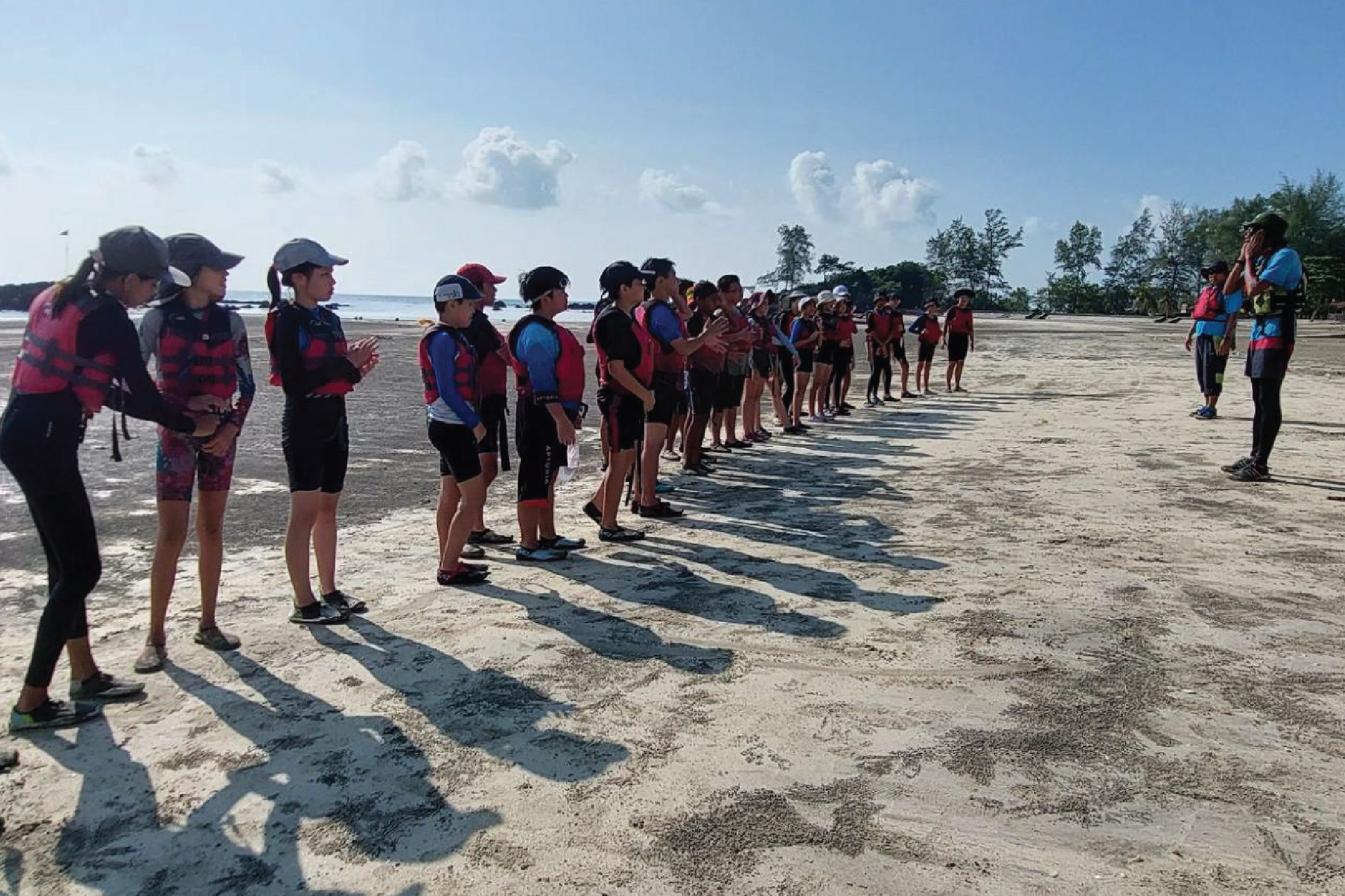
In 2023, the Year 6 and 7 camps came at a cost of RM 2,100, Year 8 was RM 3,350, Year 9 was RM 4,300 and Year 10 was RM 6,700. Our aim with this new programme is to provide a far more affordable, yet value-for-money price point, to remove the need for visas and to be rid of early morning and late night airport trips, all whilst providing a higher quality of accommodation and food, without the loss of high quality activities and experiences. This may seem like a tall order, but after due diligence and thorough research, we feel like we have been able to achieve this. In 2024, Middle Schoolers (Years 6, 7 and 8) will have their camp experience at the Thistle Resort in Port Dickson and the Stage 5 students (Year 9 and 10) will have their camp experience at the Shangri-La Golden Sands Resort in Penang. We expect each camp to cost approximately RM 2,000 per student, which is more affordable than the cheapest camp in 2023.

The Year 11 Camp will remain unchanged for now, for a number of important reasons. Whilst the Year 11 camp is currently the most expensive camp, the value of this trip to Australia, which includes visits to universities and cultural immersion opportunities, is seen as tremendous, so for now we will maintain this trip in 2024, with Year 11 travelling to Sydney in October. We will re-evaluate this in advance of the Year 11 Camp in 2025.
We are very excited about our new Year 6 to 10 Camp Program, which will achieve all of the amazing outcomes of the trips in previous year, but in a more streamlined, accessible and affordable manner. We appreciate your support of this new approach and we look forward to heading-off to Port Dickson and Penang in March 2024!
Storytelling As Family Experience: a creative nonfiction version of a family story
Mahjabeen Gazi, Year 11 Advanced English
The Unplanned Encounter: A Last Day in the Hospital
I reach the navy blue double doors with their dull chrome handles and deteriorating paint. I pull my eyes from the highly polished linoleum floor to catch a glimpse of the hallway that stretches beyond, cut into tiny squares by the thin wire in the window panels. Without pause, I push with my body weight, but I didn't need to, it swung soundlessly and with ease. A draft of air hits my face, warm and with a tincture of bleach. The light is too bright for my eyes after the darkening gloom outside, I find it abrasive, enough perhaps to bring on one of my migraines. From ahead come muffled voices, some angry, some placating. I bite down on my lip, this isn't going to be fun. However, it’s my last day working here, so I muster up all my leftover courage and proceed with my journey down the hallway.
My journey is abruptly stopped by a pre-teen who barrels into me at the speed of light, knocking me off my balance, but not enough to cause me to topple. The kid moved like her knees were freshly oiled hinges, hiding behind my legs and holding onto them with the grip of steel. Her face was painted with tears as I kneeled down to try and comfort her. The combination of salty tears with rambling words allowed me to understand precisely 0.0001% of any words that left her mouth. However, I managed to grasp the idea of what she was trying to explain: She was scared of getting her stitches done.
I tried my best to comfort the girl by whispering reassuring words in a soothing tone. I explained to her that stitches didn't hurt at all (they do) and her scar would look cool when she’s older since it's located on her eyebrow. But instead of comforting her, I triggered her tears once more when I mentioned the word scar leading her to bolt away from me faster than the flash. Children were not my forte.
The logical part of my brain took charge and chased after the little girl in the hope that she wouldn't get lost, but luckily her parents reached her before I could. How I knew they were her parents, don't ask. I'm guessing that they are. Just to make sure I was right, I followed the trio into a room where 3 nurses awaited their presence. They all turned to me with looks of anticipation plastered across their faces as if they were expecting me to hand them the cure for cancer.
Putting two and two together, I came to realise that they all assumed I was the doctor who was meant to perform the stitches on the little girl and instead of denying their assumptions like I should've, I went with it. What astonished me was the way the 3 nurses strapped the crying girl to the bed, all while she kicked and screamed. I'm guessing she wasn't one to cooperate, making me rethink my decision. Instead of hesitating, I went headfirst into the battle with no armour and just like an unarmed soldier, I ended up wounded. She had kicked me in the face with a force I didn't know kids inhabited, leaving me with a busted lip, a broken chin and a pool of blood leaking from my face. After further examination, it turned out I needed to get stitches as well, which led to both me and the little girl starting our days in a similar fashion; in pain.
WHOLE SCHOOL
JS Athletics Carnival & Games Day
Ivan Yoong, Whole School CCA & Sports Coordinator

The annual JS Athletics Carnival and Games Day is a fabulous event for the JS community. On this day, the Upper Junior School students participate in their Athletics Events whilst the Lower Junior School takes part in a series of fun activities that promote team spirit.
I would like to thank everyone for making this year's Athletics Carnival a success. Credit to Coach Hussein and Coach Zul for their unwavering support prior to the event.
|
Age Group |
Age Group Champion |
2nd place |
3rd place |
|
8 & Under Boys |
Jian Zi Neoh |
Belvan Lee |
Isaac McIntyre |
|
8 & Under Girls |
Ammara Abdul Rahman |
Zoey Layt |
Juwaalah Shashi Kumarao |
|
9 & Under Boys |
Yi Chen Chua |
SiHan Chen |
Edward Broadbent |
|
9 & Under Girls |
Halle Jackson |
Ruohan Liu |
Laura Mikayla Adrin Shafil |
|
10 & Under Boys |
Monty Oliver |
Abdul Rahman |
Edwin Ng & Jimmy Zhou |
|
10 & Under Girls |
Chelsea Unsworth |
Suenne Lee |
Flora Zhang |
|
11 & Under Boys |
Xingyu Pan |
Martiya Touserkani |
Wilson Wang & Bailin Liu |
|
11 & Under Girls |
Ashley Yoong |
Qian Hua Loo |
Jing Rou Loh |
|
HOUSE CHAMPION 2023 |
||||
| Place |
1st |
2nd |
3rd |
4th |
|
JS House |
SAUVAGE 422 pts |
FREEMAN 403 pts |
THORPE 337 pts |
RAFTER 296 pts |
Click here to view Athletics Record for 2023.

AIMS Boys & Girls Soccer Tournament
Ivan Yoong, Whole School CCA & Sports Coordinator

Our O15 boys and U13 girls played in the AIMS Soccer Tournament early this month. Both games were heavily impacted by the rainy season which led to a timeout being called by the official in the middle of the game. Our players have made AISM proud by being resilient under such circumstances and continuing to play high level soccer. Congratulations to both teams for finishing 4th in their respective categories. . Credit to our coaching team, Coach Hussein, Coach Zul and Ms Murphy. Kudos AISM!
|
O15 Boys |
Jason Guo, Cedric Boudeville, Lucas Yip, Kai Ter Huggel, Ethan Lee, Jin Ishizaka, Chase Jackson, Aaryan Singam, Imad Abdullah, Mohand Alamro & Tora Ouchi |
|
U13 Girls |
Ashley Yoong, Isis Janett, Pui Mun Chuah, Qian Hua Loo, Suenne Lee, Ruby Ritchie, Dannah Gorgor, Zaynab Fatima & Kanza Suksawat |
Term 4 CCA Update
Week 8 - Thursday 23 November CCAs conclude
Christmas Singalong
The Christmas Singalong is a family event, open to all AISM community members. Students from across the school will take turns leading our singing and families are encouraged to sing-along to popular Christmas songs. This is a fun evening event, which enables us to share the spirit of the season. Please bring along a blanket for your family to sit on, a small battery powered candle to wave and some snacks and drinks for your family.

Cezars Kitchen - Chef’s Corner
We're thrilled to share some exciting news from the Cezars Kitchen . We are now offering special birthday celebration services for your child's memorable day!

2023 AISM Yearbook
This year we will be publishing our AISM Yearbook in a digital format which will be available to all families. However, for those members of our community who would still like to order a printed copy, they can do so by completing an online form below. The printed Yearbook is available at no extra charge (one copy per family), with additional copies available at RM50 per copy.
The AISM Yearbook will be ready for distribution to all students from 7 December 2023 and the e-Yearbook will be available on the AISM website on the same day.
All Yearbook orders need to be completed by 24 November 2023. If you have any queries, please contact marketing@aism.edu.my.
